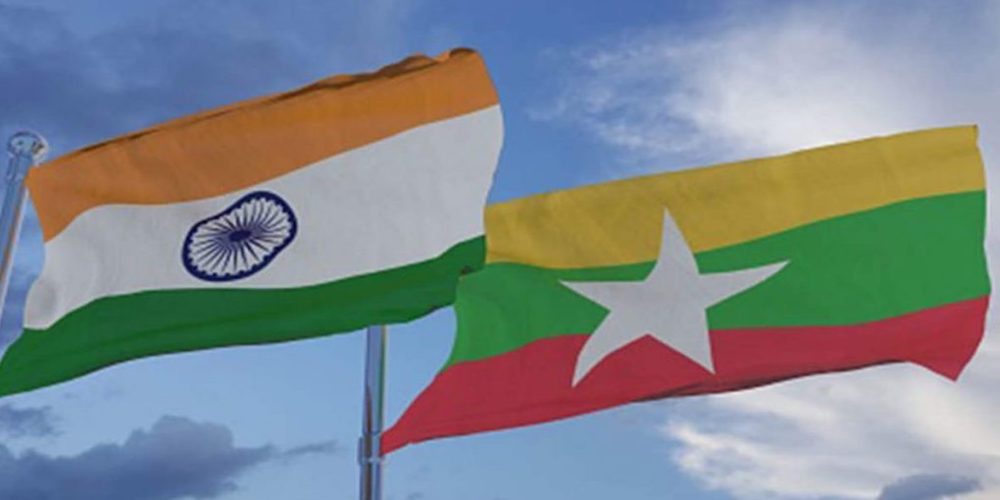Chennai-Yangon: Expand Connectivity, Commerce, and Cultural Commonalities

At the 17th India-ASEAN Virtual Summit held recently, Prime Minister Modi reaffirmed that speeding up all types of connectivity initiatives – physical, economic, social, digital, financial, and maritime – between India and ASEAN is the top priority for India. With the broader goal for regional integration, the North East states are highlighted as India’s gateway to East and South East Asia. Over the years, connectivity, commerce, and cultural commonalities (3Cs) have been cited as the broad markers for engagement with ASEAN states.
The cultural commonalities are usually viewed from a Buddhist lens, and if viewed from the diaspora perspective, the 3Cs could strengthen relations between ASEAN’s and other Indian cities through greater connectivity. For instance, a flight between Chennai and Yangon, could leverage Chennai and South India’s IT expertise to support Myanmar’s evolving digital economy, and link Tamil Nadu with approximately 7 lakh people of Tamil origin in Myanmar to deepen relations and enhance tourism. This Chennai-Yangon link is explored below.
Cultural Commonalities and People-to-People Contact
The population of overseas Indians in Myanmar is the fifth highest in the world at 20,09,207 people, preceded only by the United States, UAE, Malaysia, and Saudi Arabia, in that order, according to the Ministry of External Affairs. Another estimate suggests the population is between 20 to 25 lakh people of Indian origin. The High Level Committee on the Indian Diaspora setup in September 2000 under the Chairmanship of Dr. Singhvi noted that the Indian community is impoverished in Myanmar.
The shared history cannot be ignored. Indians had migrated to Burma in the 19th century in various capacities under the British. A study by Egreteau traces the rise in Burmese nationalism in the 1930. The Japanese invasion of Burma in 1942 led to nearly half a million Indians returning to India. The lack of recognition of Burmese populations of Indian origin to be considered as a minority in the Constitution, and a xenophobic military rule, also led to 2,07,000 Indians officially leaving Burma by March, 1976 – trend that continued until the 1980s.
Egreteau notes that the majority of the Burmese Indians were resettled in Tamil Nadu, Andhra Pradesh, Orissa, West Bengal, and in New Delhi. Burma Bazaars and Burma Colonies came up in cities and in periurban areas. Reports suggest the resettlement of 1,44,445 Burmese Indians in Tamil Nadu, when the state repatriation scheme was in place between 1964 and 1989.

The second generation of Burmese Indians integrated in Indian society. This suggests that even if a flight is introduced between Chennai and Yangon, the politicization of the Burmese Tamil issue is unlikely. Instead, there may be a political willingness to strengthen bonds through people-to-people contact, and a focus on economic and trade relations.
It is also very likely that many from Myanmar might want to trace their roots, deepen their understanding of Tamil culture and history, and visit the great temples of Tamil Nadu. Conversely, Yangon and other areas such as Bagan could see an increase in tourism from Chennai and the southern states.
Commerce
Just prior to the pandemic, Myanmar’s ranking in the 2019 UNCTAD Business-to-Commerce E-commerce Index, had improved from 133 to 126 out of 152 economies. A World Bank report on COVID-19’s impact on Myanmar released in June 2020 indicated that GDP growth forecast for the country for FY2019/20 was revised to 0.5 percent from 6.4 percent. Despite the economic hit, the ICT sector is seeing a surge of activity driven by telecommuting and e-commerce.
This surge has also been supported by the Government of Myanmar’s COVID-19 Economic Relief Plan released in April 2020. This plan prioritized “promoting innovative products and platforms” as one of seven goals, and included two action plans. The first would be to promote the use of mobile financial payments, and the second to promote the usage of e-Commerce and Social-Commerce systems. The World Bank report notes that social distancing measures led to a 50% increase in online shopping orders and in online payments, 60% increase in sales, and 25% increase in internet data usage.
The IT sector in Myanmar was also highlighted as a potential sector for investments by the Ministry of Commerce and Industry, Government of India, in 2014, Observer Research Foundation notes. Indian companies could expand operations or lead by investing in the IT and e-commerce sector in Myanmar, and possibly offer opportunities to graduates of the Myanmar Institute of Information Technology, which was established as a friendship project in 2015 between Myanmar and India.
India’s trade relations with Myanmar have also witnessed growth. The EXIM Bank reported that exports to Myanmar increased to US$1.2 billion in 2018 from US$237.3 million in 2008, while India’s imports from Myanmar were at US$445.3 million in 2018, decreasing from US$ 906.3 million in 2008.

In its 2019 report titled “India-Myanmar Trade and Investment: Prospects and Way Forward”, EXIM Bank states: “The recent investment reforms announced in the country are expected to further boost investments. Indian investors may seize the opportunities arising in the manufacturing sector of Myanmar in industries like 2- wheelers and 3-wheelers, cement, furniture, FMCG products, assembling and manufacturing of agri-machineries, cotton and silk. Focus sectors could include FMCG, pharmaceuticals and cotton yarn manufacturing.”
While other southern Indian cities may be more suited to offer IT and e-commerce solutions to Myanmar, Chennai is better placed for connectivity due to its shared history, and potential trade linkages. Perhaps Chennai could also offer its world class healthcare facilities to the citizens of Myanmar, similar to the services offered to Bangladeshis?
Connectivity
All this leads back to the issue of a lack of connectivity between cities such as Chennai with strategic cities within ASEAN.
While Chennai and Yangon are connected through the shipping services offered by Shipping Corporation of India, and GATI, a detailed analysis on ASEAN-India air connectivity by Research and Information System for Developing Countries (RIS) in 2016 points to the underutilization of seats and frequency of air linkages between India and the CLMV (Cambodia, Laos, Myanmar, and Vietnam) countries, and the need for India to play a proactive role in economic integration with the region in terms of trade in goods and services, and to explore investment opportunities. The report calls for better air connections to be developed between India and CLMV states.
Furthermore, ORF had also highlighted the need to urgently improve direct air connectivity between India and Myanmar, and observed the scope for increasing people-to-people interactions, especially to support the Indian diaspora that reside in Myanmar. Delhi, Kolkata, and Gaya are already connected by air to Myanmar.
It is worth noting that Myanmar granted India “Fifth Freedom Rights” in 2013. India now needs to connect cities such as Chennai with Yangon based on the 3C approach, and explore the possibility of connecting the two cities with Colombo or Seoul, the former to establish a connection between cities that also have no direct connection, and the latter to establish a link with Chennai despite the large Korean diaspora.

